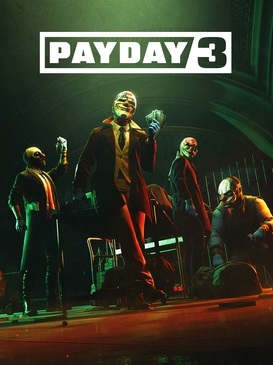‘The Queen’s Gambit’ creates an enthralling experience in the world of chess
(Left to right) Thomas Brodie-Sangster as Benny Watts, Anya Taylor-Joy as Beth Harmon, and Harry Melling as Harry Beltik
The white queen’s pawn advances to d4 on the board. The black queen’s pawn responds, matching white with queen’s pawn d5. White’s gambit is pawn e4. This chess sequence, the Queen’s Gambit, is used to take early domination of the center of the board. This strategy is not only popular in the game of chess and the title of Scott Frank and Allen Scott’s show, “The Queen’s Gambit,” but it is also used in the drama as a metaphor for Elizabeth “Beth” Harmon’s journey.
Beth Harmon, portrayed by Isla Johnston as a child and Anya Taylor-Joy as an adult, is an orphan sent to Methuen Home for Girls after her mother’s death (Chloe Pirrie). She meets Jolene (Moses Ingram), a fellow orphan who teaches her the ins and outs of the school, including a strange, green tranquilizer drug that is administered to all the children. At the orphanage, Beth meets Mr. Shaibel (Bill Camp), the custodian of the orphanage, in the basement. She comes to learn the game of chess from Mr. Shaibel and becomes a prodigy. As an adult, Beth becomes a chess star, meeting various, eccentric friends along the way.
Right off the bat, the most striking things about the show were the visuals and music. Large, drab rooms with a small, red-haired girl wearing a blue dress at the center. A Russian man dressed in dull brown playing chess with an American woman dressed in vibrant blues and reds. Even the intricacies and designs of the various chess boards and pieces contribute to the visuals of the show.
The music was on par with the visuals as well, with not only outstanding original music written by Carlos Rafael Rivera, but also ’60s classics like “Stop Your Sobbing” by the Kinks, “You’re the One” by the Vogues, and, a personal favorite, “Teach Me Tonight” with Nancy Wilson and Ron McMaster. One scene that stands out in particular as a prime example of the blend of music and visual design was Beth Harmon dancing in front of her television screen to “Venus” by Shocking Blue. The colors and movement along with the music complimented the plot perfectly.
Coming into the show, my main worry while viewing was making the monotony of chess interesting. Chess, to an outsider, is not exactly the most riveting of competitions. When I heard that “The Queen’s Gambit” portrayed a young woman’s dominance in chess tournaments, I was more than reluctant at the concept. And at first, I thought my suspicions were true. The show moved at a little more than a crawl for the first half-hour. But as the show moved forward, I was more than surprised at the level of intensity that was present through the entire show.
Specifically, the facial expressions of almost every single actor who played chess throughout the show really conveyed the varying levels of intensity for the games. For a viewer without chess knowledge, facial expressions are truly the only indicators of the status of matches in the show. The actors excelled in effectively utilizing their faces in order to build a surprisingly gripping mood.
Now, let’s get into the actors. Anya Taylor-Joy’s portrayal of Beth Harmon grew on me through the show. At first, her portrayal seemed a little flat, probably attributed to the fact that Beth doesn’t get a lot of dynamic emotion in the early stages of the story. However, as the show went on, Taylor-Joy really grows into the dysfunctional genius that is Beth Harmon. Without trying to spoil the plot, the scenes where her rigid, chess-player persona is absent are particularly enthralling. The contrast between this persona and her vulnerable personality is fascinating.
Thomas Brodie-Sangster who played Benny Watts and Jacob Fortune-Lloyd as Townes both brought really different energies to the show that somehow both complimented Beth’s demeanor at different points in her life. Marielle Heller, director of “A Beautiful Day in the Neighborhood”, who portrayed Beth’s adoptive mother Alma Wheatley also impressed with her believable dysfunction and her undeniable chemistry with Taylor-Joy. The scenes with the two of them alone were often some of the best. The main adversary of the show, Vasily Borgov, portrayed by Marcin Dorociński, was simply enchanting. His stoic behavior created an intriguing sense of mystery around him that made what little screen time he had that much more interesting.
But by far the stand-out of the show was Harry Melling who portrayed Harry Beltik. The former Harry Potter actor’s timing and emotional impact were stunning. His transformation within the show is incredible and his level of sincerity in the character makes the viewer believe. I’ve been told that the highest compliment that an actor can be paid are the words “I believed you.” While “I believed” and felt nearly every single actor in the cast, Harry Melling’s portrayal made me feel his strenuous relationship with Beth and his internal struggle.
Yet despite all of this, I feel obliged to comment on the overwhelmingly positive reviews circulating around the internet. While I agree that the show is indeed a solid watch, I found that the sheer amount of positive reviews raised my expectations a bit too much. Going into it, I was preparing myself for the next breakout show of the decade. I cannot say I was disappointed, because the show was indeed very good. But I found the onslaught of positive reviews significantly impacted my ability to enjoy the show for what it was.
So, the age-old question. Is it worth a watch? Absolutely. I would suggest that you should go into the show without having read too many reviews (except for this one of course!) of the show to avoid disproportionally setting your expectations. But nevertheless, the show is such a pleasant experience from the visuals and audio to the performance of the various actors to the intense, action-packed chess matches that I highly recommend it.
Grade: A
Oliver is a graduate of the Pelham Memorial High School class of 2022. He has been working with the Pelham Examiner since August of 2019 and looks forward...

















